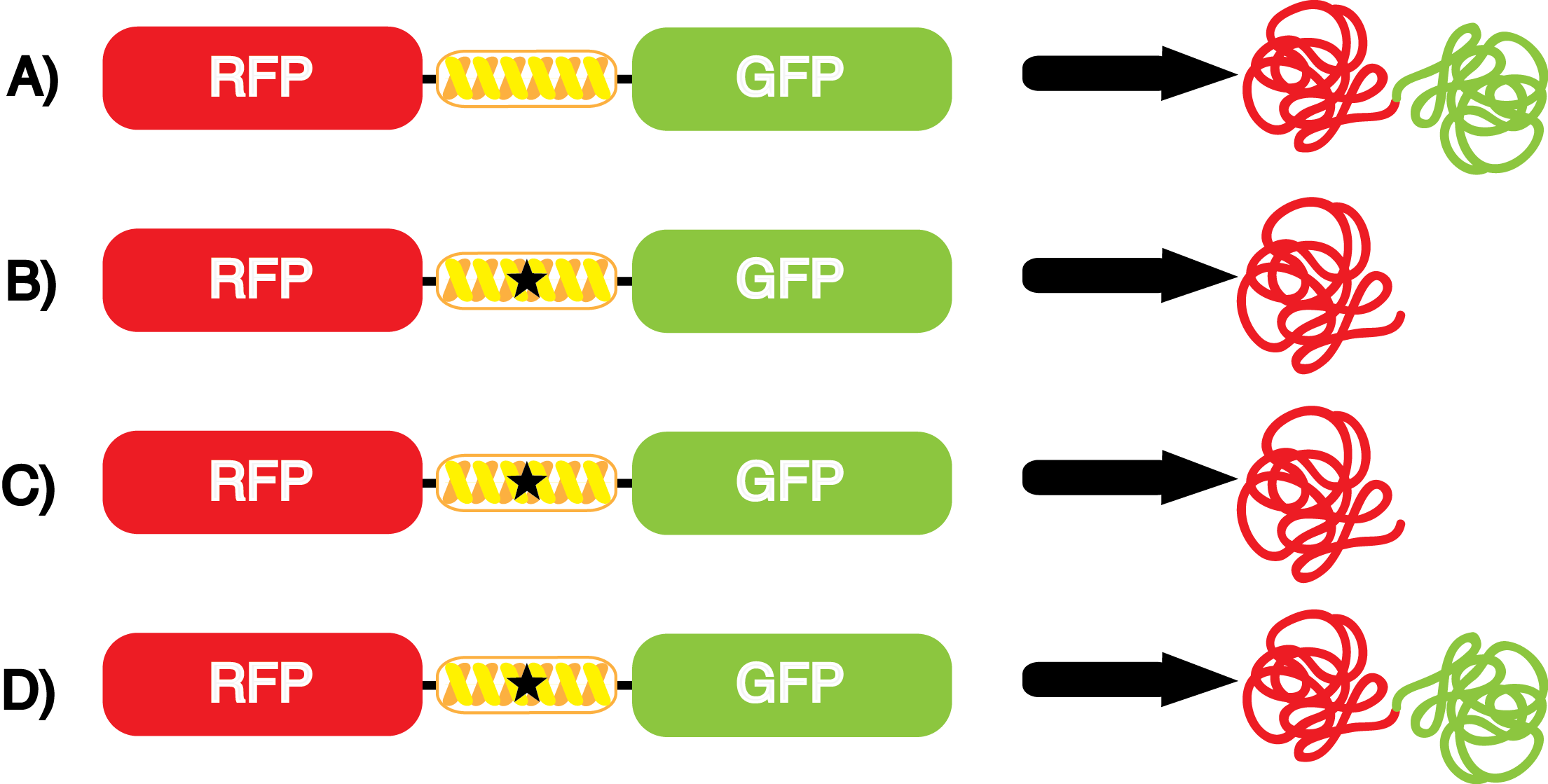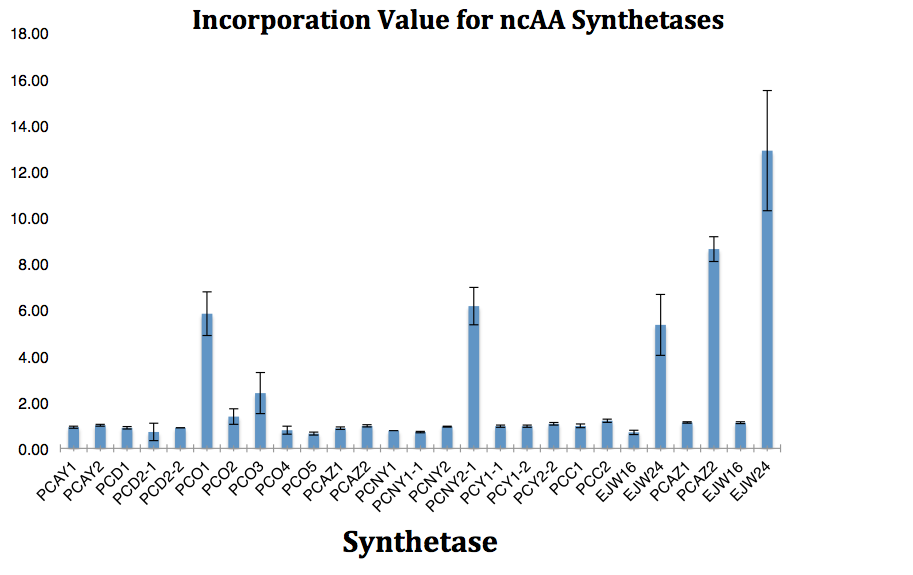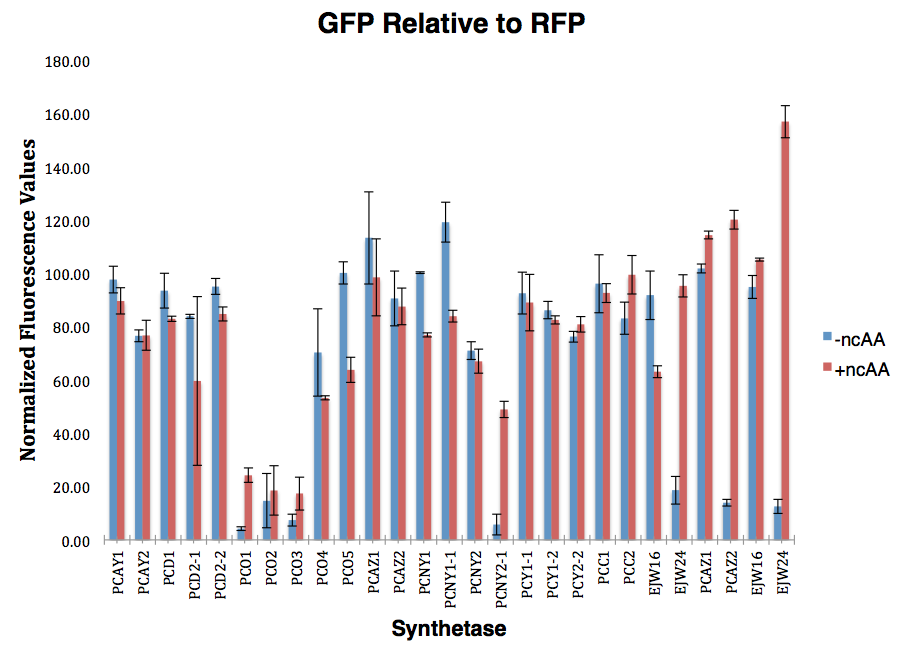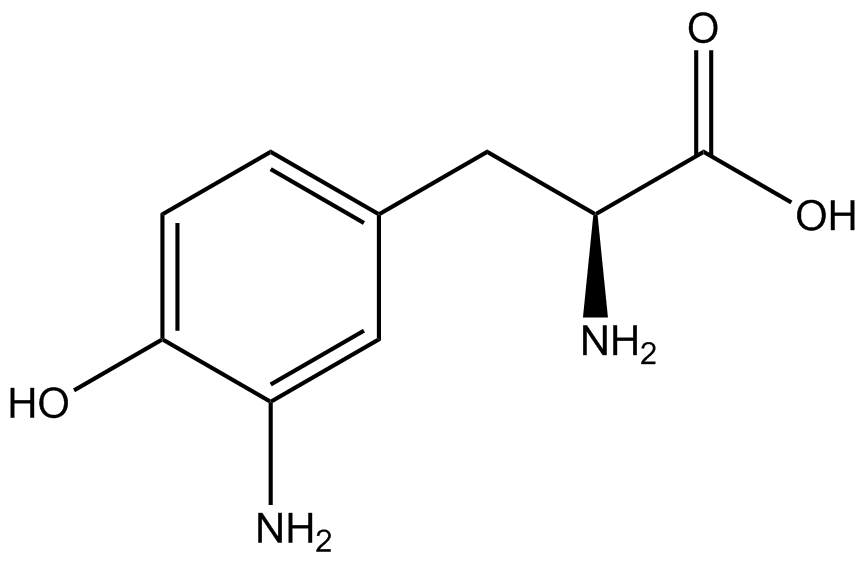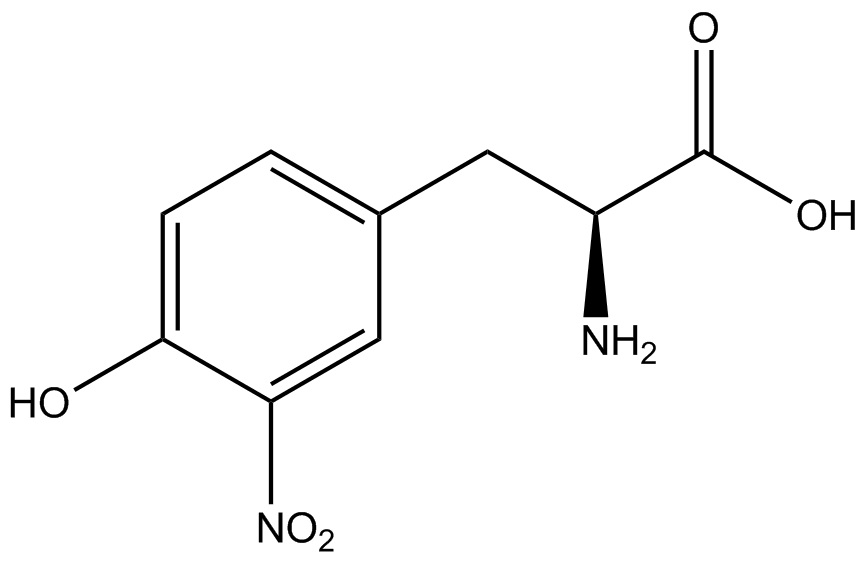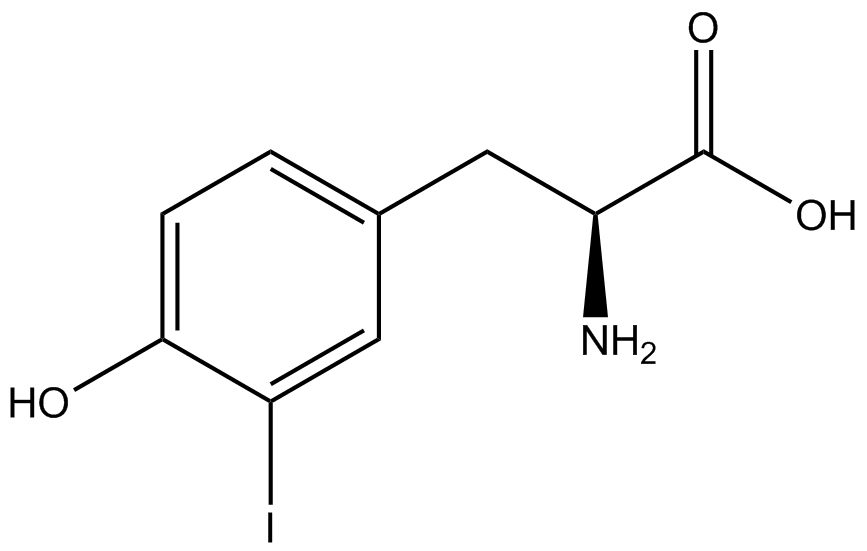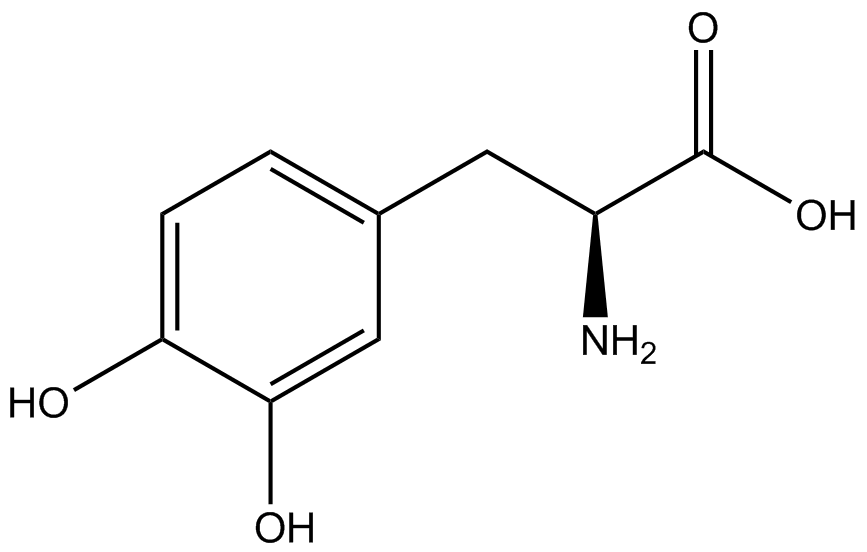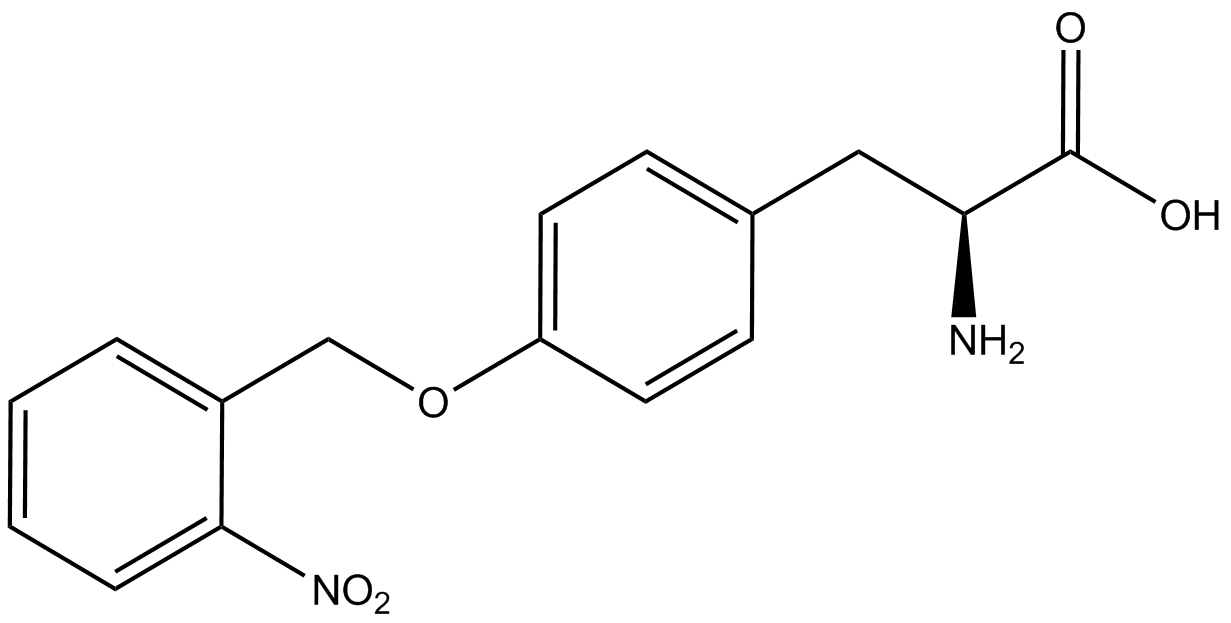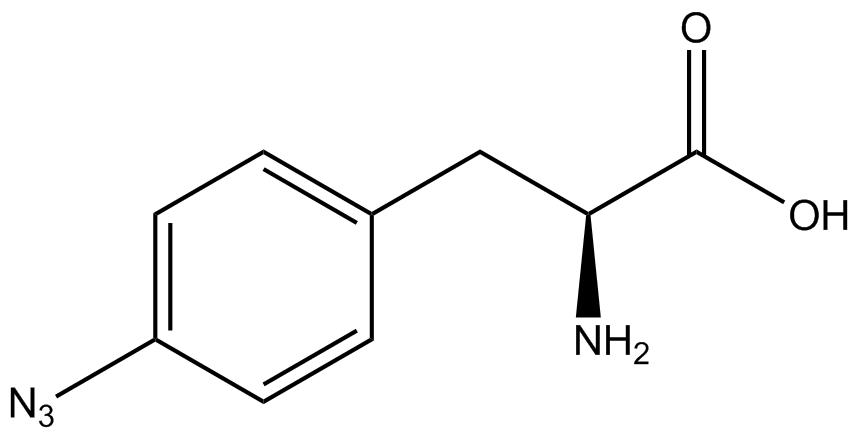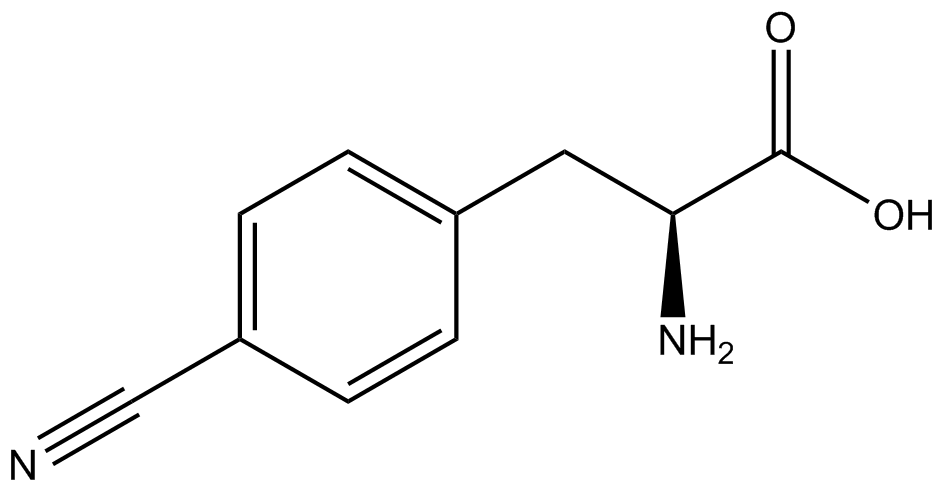Team:Austin Texas/kit
From 2014.igem.org
(→Using The Kit) |
(→Using The Kit) |
||
| Line 125: | Line 125: | ||
B) pFRY (-) pStG, (+/-) ncAA.<br> | B) pFRY (-) pStG, (+/-) ncAA.<br> | ||
C) pFRY (+) pStG, (-) ncAA.<br> | C) pFRY (+) pStG, (-) ncAA.<br> | ||
| - | D) pFRY (+) pStG, (+) ncAA.]] | + | D) pFRY (+) pStG, (+) ncAA.<br> |
| + | The above results represent the "perfect" tRNA synthetase/tRNA pair: one that has 100% fidelity and 100% efficiency. Actual synthetase/tRNA pairs will occasionally misincorporate an incorrect amino acid, and these pairs will not always be perfectly efficient conducting every step in the process of reading through an amber codon.]] | ||
| - | * A) In a cell containing pStG and pFRYC, the ribosome will translate the RFP reporter, linker, and sfGFP, producing red and green fluorescent proteins that result in visible yellow fluorescence (Figure 2A). This happens because the reporter contains no amber codon, and thus does not require a ncAA synthetase/tRNA pair. | + | *''' A)''' In a cell containing pStG and pFRYC, the ribosome will translate the RFP reporter, linker, and sfGFP, producing red and green fluorescent proteins that result in visible yellow fluorescence (Figure 2A). This happens because the reporter contains no amber codon, and thus does not require a ncAA synthetase/tRNA pair. |
| - | * B) If a cell contained only pFRY, without pStG, then the ribosome will translate the RFP and terminate at the amber codon on the linker producing a red fluorescence (Figure 2B). This occurs because without the pStG, the amber codon is not recoded to allow for ncAA incorporation. | + | *''' B)''' If a cell contained only pFRY, without pStG, then the ribosome will translate the RFP and terminate at the amber codon on the linker producing a red fluorescence (Figure 2B). This occurs because without the pStG, the amber codon is not recoded to allow for ncAA incorporation. |
| - | * C) In a cell containing pStG and pFRY, there are multiple possible outcomes, depending on what is present in the culture. In the absence of ncAA, the ribosome will translate the RFP and terminate at the amber stop codon on the linker producing a red fluorescence (Figure 2C). This occurs because while the codon has been recoded, there is no ncAA and without ncAA there can be no incorporation at the amber codon. | + | * '''C)''' In a cell containing pStG and pFRY, there are multiple possible outcomes, depending on what is present in the culture. In the absence of ncAA, the ribosome will translate the RFP and terminate at the amber stop codon on the linker producing a red fluorescence (Figure 2C). This occurs because while the codon has been recoded, there is no ncAA and without ncAA there can be no incorporation at the amber codon. |
| + | |||
| + | *''' D)''' In a cell containing pStG and pFRY, there are multiple possible outcomes. In the PRESENCE of ncAA, the ribosome will translate the RFP, then it incorporates the ncAA at the amber codon in the linker, and finally it proceeds to translate the downstream sfGFP reporter, producing a visible yellow fluorescence (Figure 2D). This occurs because the synthetase found in pStG can covalently attach the ncAA to the tRNA gene present in pStG. This "charged tRNA" is then present during translation, allowing incorporation of the ncAA into the reporter protein. | ||
| - | |||
However, the above scenarios assumes that the synthetase/tRNA pair function efficiently and with high fidelity. | However, the above scenarios assumes that the synthetase/tRNA pair function efficiently and with high fidelity. | ||
Revision as of 19:33, 14 October 2014
|
 "
"


